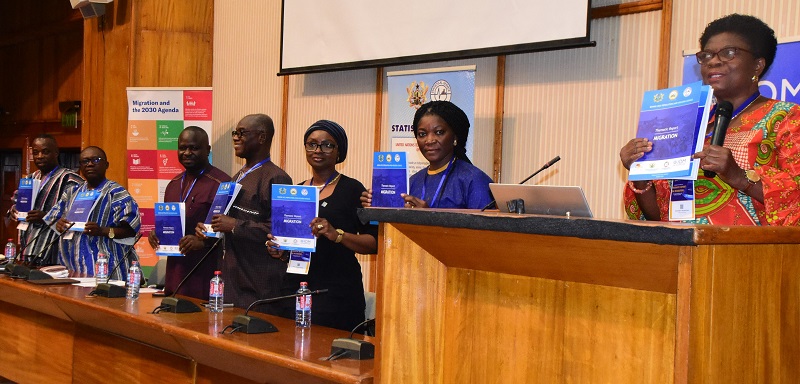A total of 9,240,000 constituting 28.5 per cent of Ghana’s population of 30.8m (2021 census) are migrants, a study on Migration by the Ghana Statistical Service, has said.
The report, among others, defined migration as the movement in space often involving a change in the usual place of residence.

Thus, the migrants being referred to constitute both Ghanaians and non-Ghanaians.
A total of 4,851,000, constituting 52.5 per cent of the migrants, were females and the remaining 4,389,000, constituting 47.5 per cent, males.
Out of the number, non-Ghanaian migrants per the Census in 2021 stood at 294, 341, compared with 398,585 in 2010.
Estimated 60.5 per cent of the non-Ghanaian migrants were males and the 39.5 per cent females.
The report, titled 2021 Population and Housing Census Thematic Report on Migration, said more of the migrants in the country live in rural areas, indicating that the proportion of migrants in rural areas accounted for 33.9 per cent and those in the urban centres stood at 22.2 per cent of the migrant population.
It further said among the 16 regions, Greater Accra received the most migrants, followed by Ashanti and Western regions.
Presenting the highlight of the study findings, Professor John K. Anarfi, the Lead writer of the report, explained that migration played an integral role in the development of any nation.
He said it was in light of that the United Nations had recognised that countries include in their census questionnaires questions to elicit migration information.
Prof. Anarfi said six regions in the south such as Greater Accra, Western North, Bono East, Ashanti, and Ahafo received more migrants than they sent out and the Northern regions sent out more migrants than they received.
“Of the six regions, Greater Accra gained the highest of over one million people, Ashanti gained over 200,000 people and Western Northern over 50,000,” he said.
Prof. Anarfi said Central and Eastern regions are in the south but experienced negative net migration, which is the loss of persons from rural areas, impact on the level of output and development of rural areas.
The Lead Writer of the Report said most of the non-Ghanaian migrants were from Niger, Burkina Faso, Nigeria and Togo.
He explained that most of the non-Ghanaian migrants were engaged in services, sales, skilled agriculture, forestry and fishery.
Prof. Anarfi said most of the Ghanaian population were youthful and the government needed to put strategies in place to provide the youth with skills and jobs to enable the country to take advantage of the demographic dividend.
The Lead Writer mentioned some of the reasons for migration as marriage, family reunification and employment.
He also called for a comprehensive study to assess the migration situation in the country, indicating that the last comprehensive migration study was done in 1995.
The Government Statistician, Professor Samuel K. Annim, in his remarks, said the migration report was the 17th one the GSS had generated from the 2021 Population and Housing Census.
He said the report was to help generate data on migration for policy planning.
Professor Annim stressed the need for statistical targets to be integrated in policies of government to help accelerate the socio-economic development of the country.
The Chief Director of the Ministry of the Interior, Mrs Adelaide Anno-Kumi, who chaired the programme, said report would, among others, help present statistics on place of birth, literacy status, education attainment, employment and living conditions of migrants.
BY KINGSLEY ASARE & CECILIA LAGBA